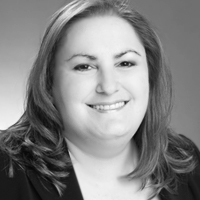Wendy Stav: Good morning everyone and thanks for joining. I am unbelievably excited to talk about this topic. As you heard from my bio, I have spent a lot of time in the area of older drivers because that is where all or most of the Federal funding is, even though I have had this underlying interest and involvement in community mobility across the whole life span. I view this as an area of untapped potential in our profession where we can really make a difference.
Driving and Community Mobility
I would be remiss if I went into this topic without reflecting on our Occupational Therapy Practice Framework. Driving and community mobility is considered an IADL, an instrumental activity of daily living. For the first edition, and maybe even the second edition, the framework called it driving, but we have expanded that term to driving and community mobility. We are realizing that maybe these two terms really need to be split into two different occupations. Stay tuned and we will see what happens for the fourth edition of the framework.
The current definition is:
planning and moving around in the community and using public or private transportation, such as driving, walking, bicycling or accessing and riding in buses, taxi cabs, or other transportation systems.
AOTA, 2014, p. S19
It is any way that we move from place to place. It might be a skateboard, a razor scooter, Uber, the bus, or an airplane. We move about our community with lots of different modes of mobility. The inclusion of driving and community mobility in our practice framework lays out the foundation that this is within our scope of practice. It is absolutely for us to tackle and to address with our clients.
The other piece of this is that driving and community mobility has been referred to as an occupation enabler. It is an occupation in it of itself, but it also enables engagement in all sorts of other occupations (AOTA, 2016; Stav & Lieberman, 2008). If we think about the list of occupations in the practice framework, we have to get to certain destinations in order to engage in those occupations. For education, kids have to travel to school. To get health care, you have to travel to the doctor's office. For play, you may have to travel to the playground. For any social participation, you may have to travel to engage with other people. So, driving and community mobility is clearly an important occupation, but it is also a conduit to engaging in all sorts of other occupations. This ups the value of it and shows that we should be paying more attention to it. Not being able to drive or be mobile in the community is pretty difficult. However when we think about how much it would limit engagement in other occupations, this shows how important it is for all ages, including the youngest members of our community.
Value of Community Mobility
There is a tremendous value in community mobility. It allows us to access other types of engagement, some that represent milestones. One example is riding home from the hospital as a baby. If we think about how stressful that first trip is for those new parents, putting that fragile baby in a car for the first time and just getting home safely. We see so many moms actually riding in the back seat because this is such a momentous and scary event. Another moment is when we trust the grandparents or somebody else to take the kids out.
Other moments include baby taking their first steps, starting to walk, and walking down those sidewalk. The world is starting to open up to them. Independent bike riding is a big step as it allows kids to get from point A to point B a whole lot faster than just walking. Riding the school bus is also a pretty big milestone. Often we think about Susie's first day of school, but we do not always think about how little Susie's going to get to school and how they are going to manage and negotiate that whole trip. They have to get on and off the bus and know which bus to get on. We will talk about that a little bit more when we talk about school buses at the end of the session today.
When Mom actually lets you cross the street by yourself, after looking left-right-left again, is a big milestone. It is a whole process: do it with somebody, hold hands, etc. They can then start to parley that into other occupational engagement. They can now walk down the street and go to a friend's house.
